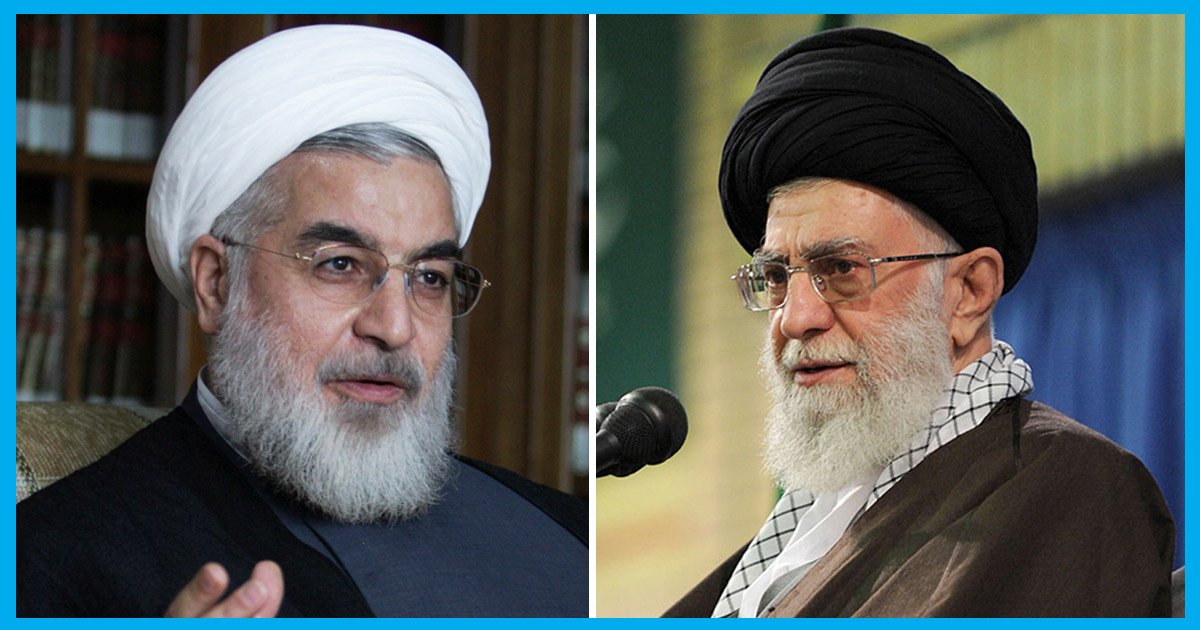
As Iran Prepares To Elect Its Next President, Here’s All You Need To Know About Its Election
15 May 2017 1:18 PM GMT
Editor : Sudhanva Shetty Shetty
Writer, coffee-addict, likes folk music & long walks in the rain. Firmly believes that there's nothing more important in a democracy than a well-informed electorate.
On 19 May 2017, Iran heads to the polls to elect its eighth President.
This is the Islamic Republic’s 12th presidential election. Though it is the Iranian people who will elect their President, the election process and the powers of the President in Iran differ from those in other countries.
How Iran elects its President
Iran’s political system is highly complicated. Essentially, the main elections are to elect
- the President,
- the legislature (the Islamic Consultative Assembly), and
- the Assembly of Experts.
Furthermore:
- The President is the Head of Government while the Islamic Consultative Assembly is the chief legislative body.
- The Assembly of Experts elects the Supreme Leader of Iran, who serves as Head of State and who, for all practical purposes, has more power than the President.
- The Supreme Leader, in turn, selects the 12 members of the Guardian Council.
- All candidates for the Presidency, the Legislature, and the Assembly of Experts have to be approved by the Guardian Council.
The Iranian political system is designed to safeguard the interests of the Supreme Leader – Ayatollah Ali Khamenei (who has been Supreme Leader for the last 28 years). As explained above, all candidates for President have to be approved by the Guardian Council – the members of which are selected by the Supreme Leader. The entire system is crafted in a manner to give the religious establishment powerful say in who becomes President, who is still “democratically” elected by the country’s 50 million eligible voters.
So do the Iranian people have any say at all when the options in front of them are essentially pre-picked and vetted by unelected individuals of the theocracy? On paper, the answer to this question would seem a resounding “no”. However, history indicates otherwise. The candidates approved by the Guardian Council are usually people who the Council can trust to toe the line and not rebel against the Ayatollah in any manner. However, even so, the candidate list is quite diverse, ranging from orthodox Islamists to reformist ideologues.
For example, only in recent years the Iranian people elected two very different Presidents – one was Mahmoud Ahmadinejad, whose Presidency saw increasing isolation of Iran and increasing hostility towards the West, and the other was Hassan Rouhani, the reformist incumbent whose surprise victory in 2013 was followed by the achievement of the Iran Nuclear Deal and an easing of sanctions.
The 2017 Iranian Presidential election
This year, the Guardian Council disqualified 1,629 candidates – including all 137 women – from running in the election. The 2017 election was decided by the Ayatollah to be a contest between six men. On 15 May, one of them withdrew, trimming the list to five men. (More here)
The incumbent Hassan Rouhani’s 2013 victory was hailed as a landmark event in modern Iranian history. With the Iran Nuclear Deal struck with the West and the rolling back of West-imposed sanctions, the Iranian economy has been limping forward since. His tenure has seen Iran rebuke the isolationist stance that was the characteristic of the rule of the previous President, Ahmadinejad.
However, while Rouhani’s tenure has seen Iran slowly opening itself to the global economy, propelled by the rolling back of sanctions, Rouhani has been unable to deliver on many of his campaign promises when it comes to domestic politics. Iran’s healthcare remains fractured, while unemployment is rampant in both rural and urban areas. And economic growth, while gradually increasing, is increasing sluggishly.
A Persian crossroads: How the next Iranian President can make or break Iranian diplomacy
Why does the 2017 Iranian election matter? Simply put, Iran’s politics has reverberations throughout the Middle-east – and thus throughout the world.
Opinion polls give Rouhani a comfortable mandate for reelection. But in recent days, the margin has tightened, and Rouhani’s conservative opponents are swiftly catching up with him.
Whoever wins on Friday will have to steer Iran for the next four years. He will have to combat numerous domestic problems and also uphold and preserve the Iran Nuclear Deal, the best shot that Iran has to rid itself of all sanctions imposed on it since 1979 and truly enter the global market.
US President Donald Trump has been suspicious of the Nuclear Deal, to say the least. Whoever wins on Friday will also have to pacify renewed American animosity towards Iran, continue to degrade its nuclear programme, reform the national economy, and placate regional ties.
Read more:
 All section
All section













